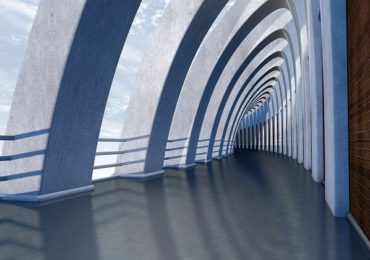Introduction – A brief history of New Urbanism
With the industrialization of cities, there was the advent of automobiles and the increase in car-use. Although cars are abundantly used around the world both in the Global North and Global South, there are increasing movements being formed against car-use and increasing walkability in cities. These movements do not just focus on walkability, they promote bicycle use in cities and the use of public transport. There are many car-free zones and pedestrianized public spaces being formed in cities to increase people’s physical activity and to decrease automobile use. New Urbanism is one such movement which promotes walkable neighbourhoods, including a range of housing solutions to provide a car-free environment. They support the construction of more open spaces, safe streets and pedestrianisation as a way to combat suburban sprawl. New Urbanism is having a growing influence on how and where metropolitan regions choose to grow.
Also Read detailed article: What is New Urbanism? | Definition, Concept & Benefits

Examples of New Urbanism
Seaside Florida
A well known example of New Urbanism is Seaside Florida. This coastal town’s main purpose was to improve the well being and community among the neighbourhood. Increasing public spaces to create communal bond was thought to be an important component of Seaside Florida. Seaside’s layout included the principle of ‘five minute walk’ to encourage quarter mile walking on foot, as houses were built alongside public spaces to create more walkability among the community. Today, however, Seaside Florida has become a very expensive million dollar community rather than an affordable place for city residents to live as it was originally planned for. Plater-Zyberk suggests that the town can be used as an example for further research in creating high density and mixed use cities.

Cornell, Markham
Cornell in Markham is another example of New Urbanism principles that were redeveloped by the Markham City Councillors in coordination with the firm Duany Plater-Zyberk. The plan had around 27,000 people accommodated in the houses including many schools and community centers with shopping accessibility and supermarkets. It also had a large retail space, that would have been useful for people living in walkable distance to the stores. People could walk to the stores and there was accessible public transport from all neighbourhoods to the schools, jobs and shopping needs of people. Cornell included a community park, a hospital, a library and management facilities which were all located within walkable distance.
There are many other examples of cities that have adopted the New Urbanism design, including a minimum of 20 to 30 communities worldwide, in Canada, Europe and other western countries. India is not in the list for developing New Urbanism as there needs to be a lot of improvement in India’s streets and public spaces before adopting New Urbanism principles. As western countries already provide most of these facilities, relocating and readapting the designs would be simpler and more practical.
New Urbanism in Alabama
Many local offices (County Commissioners, Boards of Education, Tax Assessors, Tax Collectors, etc.) in the state are still held by Democrats. Local elections in most rural counties are generally decided in the Democratic primary and local elections in metropolitan and suburban counties are generally decided in the Republican Primary, although there are exceptions.
Alabama’s 67 County Sheriffs are elected in partisan races and Democrats still retain the majority of those posts. The current split is 42 Democrats, 24 Republicans, and 1 Independent (Choctaw). However, most of the Democratic sheriffs preside over rural and less populated counties and the majority of Republican sheriffs preside over more urban/suburban and heavily populated counties. Two Alabama counties (Montgomery and Calhoun) with a population of over 100,000 have Democratic sheriffs and five Alabama counties with a population of under 75,000 have Republican sheriffs (Autauga, Coffee, Dale, Coosa, and Blount). The state has one female sheriff (Morgan) and 9 African-American sheriffs.
Blount Springs in Blount Springs: Blount Springs, Alabama, was originally founded in the nineteenth century. Until a fire destroyed much of the town in 1915, its mineral springs and water courses set in the steeply terrained forest attracted a flourishing population. The master plan for a new Blount Springs seeks to re-create a community in harmony with its history and its environment.
Mt Laurel in Shelby County: Three aspects differentiate Mt Laurel from anything else you’ll find in Birmingham. First, the homes at Mt Laurel feature the classic craftsman style with modern, energy-efficient amenities. Second, the Town of Mt Laurel was built with a respect for the natural topography and vegetation of the land. Third, the Town of Mt Laurel is a Traditional Neighborhood Development, built around the ideals of New Urbanism.
Tannin in Orange Beach: Tannin is a true New Urban community that is based on the principals of traditional neighborhood design. Tannin accommodates the automobile yet is designed on a pedestrian scale where walking and speaking distances prevail. With careful attention to the design of the public realm, the streets become a more enjoyable and safer place for people to walk or bicycle.
Providence in Huntsville: Live in a world where going to your favorite restaurant, shopping, or a trip to the doctor’s office is measured in footsteps not drive time. Make your home in The Village of Providence, Huntsville, Alabama’s most exciting Traditional Neighborhood Development. Luxury homes, townhouses, and lofts, offering Big City Life – Small Town Living.
Trussville Springs in Trussville: You wake up. It’s early. But you’re not tired. You hear the river in the background. No. It’s not your noise machine. It’s the river. Surging and flowing. Surging and flowing. It’s the rhythm you know so well. And it’s calling you. You step outside. Spot the paper. No. The news can wait. You hop on the trail. The wind zips through the willows, racing you; recharging you. You’d take this morning. Over any other morning. Any time.
The Preserve in Hoover: Rest awhile on our front porch and enjoy the view across Village Green, across hundreds of years of classic American architecture. To appreciate The Preserve, you’ll have to get out of that rocking chair, eventually. There are trails to follow, rocks to climb, waterfalls to enjoy, and neighbors waving from porches, hoping you’ll stop and sit awhile in a rocking chair …
Hampstead in Montgomery: You would think of the most important things first. A place that offered a quality of life beyond any other. Where community meant something real. Where beauty and artistry were woven into every element of life. Where value was built into each home and each feature of the neighborhood. A place where you felt both comfortable and challenged to try new things in life. If this is a place you would imagine, then come join us at Hampstead. It’s happening here now. This is a place you’d be at home.
Also Read: NIMBY: Not In My Backyard | Opposition by local residents, Tactical Urbanism
Examples of New Urbanism in America
New Urbanism in Arkansas
Arkansas is a state located in the southern region of the United States. Its name is an Algonquian name of the Quapaw Indians. Arkansas shares a border with six states (clockwise: N:Missouri; E: Tennessee, Mississippi; S: Louisiana; W: Texas, Oklahoma) with its eastern border largely defined by the Mississippi River. Its diverse geography ranges from the mountainous regions of the Ozarks and the Ouachita Mountains, which make up the U.S. Interior Highlands, to the eastern lowlands along the Mississippi River.
The Village in Hendrix Conway: Situated in the heart of Conway, Arkansas, The Village at Hendrix blends Southern heritage with thoughtful neighborhood planning. It recalls the historic values of beautiful architecture, scenic grace, central marketplaces, welcoming outdoor spaces, and friendly local shops and restaurants. It brings residential homes, commercial amenities, parks and trails together naturally and elegantly with a commitment to green building principles.
New Urbanism in Arizona
Arizona is a state located in the southwestern region of the United States. It is also part of the western United States and the mountain west. The capital and largest city is Phoenix. The second largest city is Tucson, followed in size by eight Phoenix metropolitan area cities: Mesa, Glendale, Chandler, Scottsdale, Gilbert, Tempe, Peoria, Surprise and then by Yuma in Yuma County. Due to the primarily dry climate, large temperature swings often occur between day and night in less developed areas of the desert. The swings can be as large as 50 °F (28 °C) in the summer months. In the state’s urban centers, the effects of local warming result in much higher measured night time lows than in the recent past.
Verrado in Buckeye: Verrado is a master-planned community located in the Town of Buckeye, Arizona, approximately 25 miles west of downtown Phoenix. The development, at the base of the White Tank Mountains, is the largest suburban community in Metropolitan Phoenix in which the concept of New Urbanism was utilized. It is planned to contain over 14,000 dwelling units at full build out.
Conclusion – taking New Urbanism forward
Therefore, the designs adapted by New Urbanism has left a lasting impression on many communities worldwide, particularly in the west. Many of the cities that followed New Urbanism principles have become very successful and sort after towns as people enjoy being centrally located with good transport facilities without being able to rely on cars. Walkability is one of the main concepts of New Urbanism which has been successful in influencing other such movements such as the car-free movement and placemaking movement. It is important to understand these principles of New Urbanism for the benefit of future community well-being, which can be practiced and designed around the world.
Read About: Public Sculptures can make an Impact on People